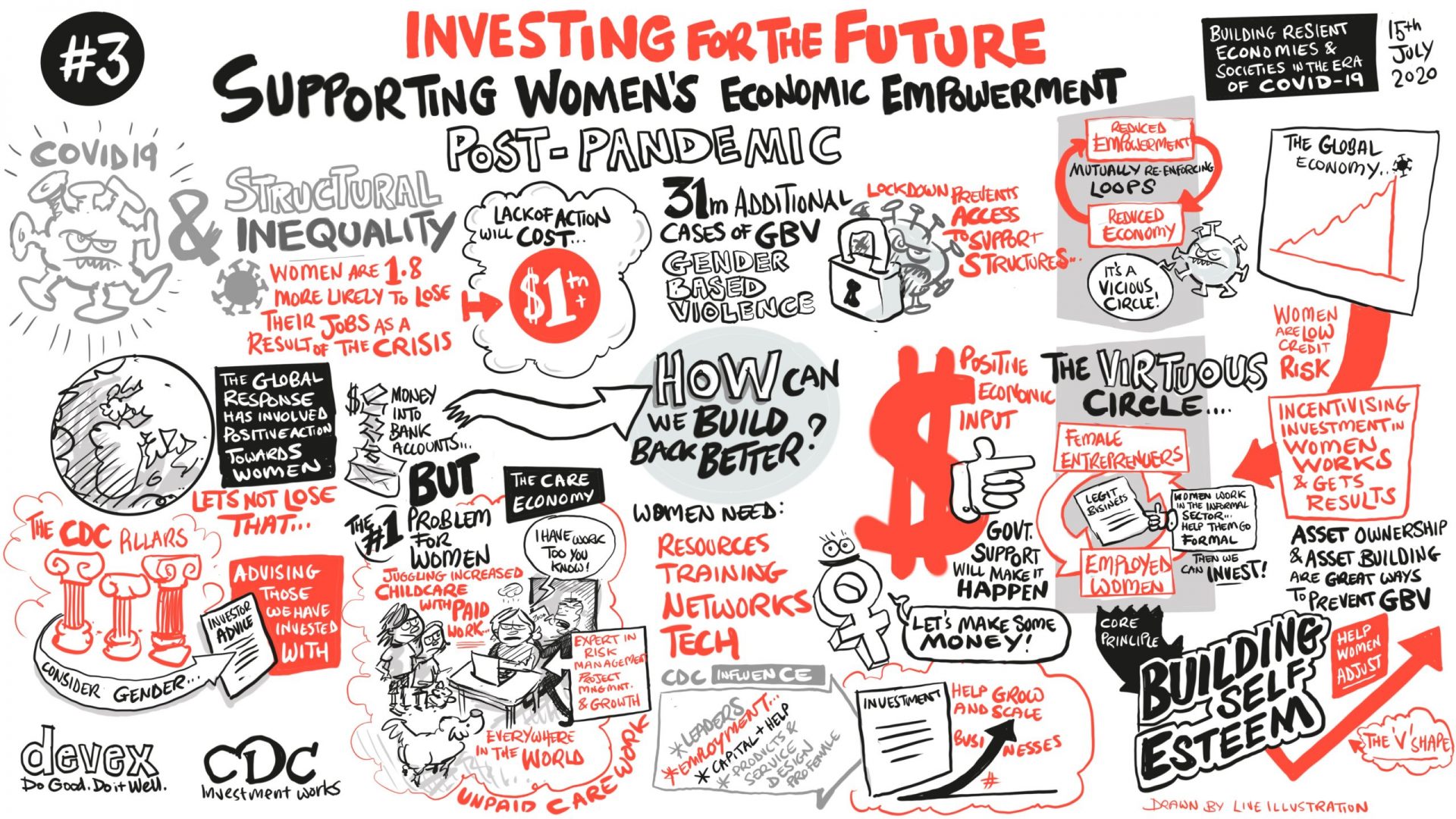In 1990, Amartya Sen wrote an article called “more than 100 million women are missing”.
He explores the story of how gender inequality and the neglect of women in terms of healthcare, education and nutrition has led to excessive mortality of women. Yet it also found a direct positive association between women across the world in “gainful employment” and survival prospects. Fast forward 25 years and McKinsey calculates that $12 trillion could be added to global GDP by 2025 through advancing women’s economic potential. As a development finance institution with a dual mandate to grow businesses and deliver development impact, CDC has a huge opportunity to advance women’s economic empowerment and improve on these long standing moral and economic failures.
The IFC calculates that 31-38 per cent of formal SME’s in emerging markets are fully or partially owned by women, yet 57-71 per cent of women have unmet financial needs. This represents a financial opportunity to serve this market of up to $320 billion . In Africa 5% of CEO’s are women and in Asia only 4 per cent, and in both regions female labour force participation rates have largely remained flat for the past 25 years, despite women’s education rates rising by around 10 per cent over the same period. At the same time, globally women spend three hours per day more than men on unpaid care. This represents a misallocation of human talent across society, and a significant lost opportunity. Over 1.7 billion women in low and middle income countries do not own mobile phones and represent a significant proportion of consumers who are missing out on access to essential mobile based services such as insurance, healthcare and education. Imagine: how large could the impact be if we captured all this value from women’s time, talent, consumer needs, entrepreneurship and innovation?
The visibility of women increasing as active economic and social agents is too compelling to ignore.
CDC investee company Big Basket (which we are invested in via the Ascent India Fund) strategically hired women at their Pune distribution centre, who now constitute 50 per cent of the total workforce there. The company had struggled with attrition rates, and decided to hire women as stock pickers in order to increase retention. After the implementation productivity went up to 87 per cent – at par with the all-male team.
At the same time, diversity in the workforce improved the work place atmosphere and industrial relations. Envirofit International piloted a women’s empowerment training programme for clean cook stove sales agents in Kenya, which resulted in women outselling cook stoves compared to their male counterparts by three to one . Through its high calibre and consistent supply of talent, The Boardroom Africa – a platform with the leading database of c-suite and senior executive women across the African continent, is tearing down the myth that “there aren’t any interested or qualified women” willing or able to take on Board leadership.”
CDC’s new gender strategy focuses on four priority areas.
They are women’s leadership, women’s job quality, women’s financial inclusion and gender relevant products and services. Our goal is to link value chain enhancements (leadership, upskilling women, serving female customers) with the positive performance of our investments and prove that women’s economic empowerment can lead to growth, productivity and better risk management while at the same time providing the tools and resources for women across our markets to make decisions which help to improve their lives. This will be a journey – to identify the most effective points of intervention within sectors and geographies takes time. But hopefully one that will help to build long term sustainable growth.
The closer we look and the more experience we gain, the easier it will be to identify interventions– whether its addressing absenteeism and productivity issues in agriculture, developing a marketing and outreach programme in healthcare and education for women and girls, designing safe workplace cultures in manufacturing, developing apprenticeship schemes for science, technology, engineering and mathematics (STEM) in our power sector investments, providing collateral free loans or risk guarantees to female entrepreneurs struggling with loan applications, or ensuring that at every opportunity, there is a diverse pool of candidates to select from when a position of strategic importance opens up in a company. Trends and patterns related to gender can be identified everywhere, when we open our eyes and minds. Notions of “masculinity” and “femininity” are all social constructs, and every investment decision we make has the power to change this.

Of course, we are not alone in this thinking and we are working with, and leveraging the experiences of many actors in this space. A recent study conducted by Wharton Social Impact Initiative found 58 funds across the world stating the use of a gender lens which collectively have a target fund size of $2 billion; of which over $1.38 billion has been raised and is being invested . In 2008, Goldman Sachs and IFC launched the Women Entrepreneur Opportunity Facility to provide women owned SME’s access to capital, by 2010 it had committed $600 million in investments and reached 30,000 women entrepreneurs .
We believe that by exercising our influence in women’s economic empowerment, CDC can make a material difference in ensuring women are more fully recognised in our investments and are actively counted and valued in a just and equitable way.









